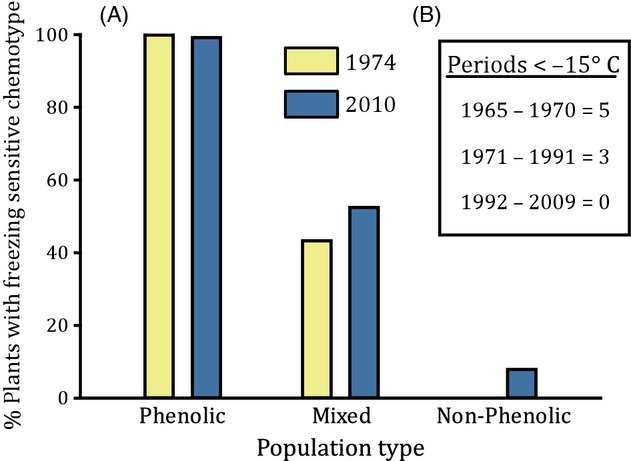Figure 2.

Changes over time in the frequency of freezing sensitive chemotypes of Thymus vulgaris (Lamiaceae) with climatic warming (Thompson et al. 2013). Populations along altitudinal transects in France were first surveyed in 1974 and again in 2010. The proportion of individuals with a freezing sensitive chemotype increased between 1974 (yellow bars, left) and 2010 (blue bars, right), especially in populations that were initially frost tolerant (nonphenolic) or mixed (Fig. 2A). This corresponds with a marked decrease in episodes of severe frost (temperatures < −15°C) between 1965 and 2010 (Fig. 2B). Because the chemotypes are entirely genetically determined (not plastic), this provides compelling evidence of evolutionary change with changing climatic conditions.
